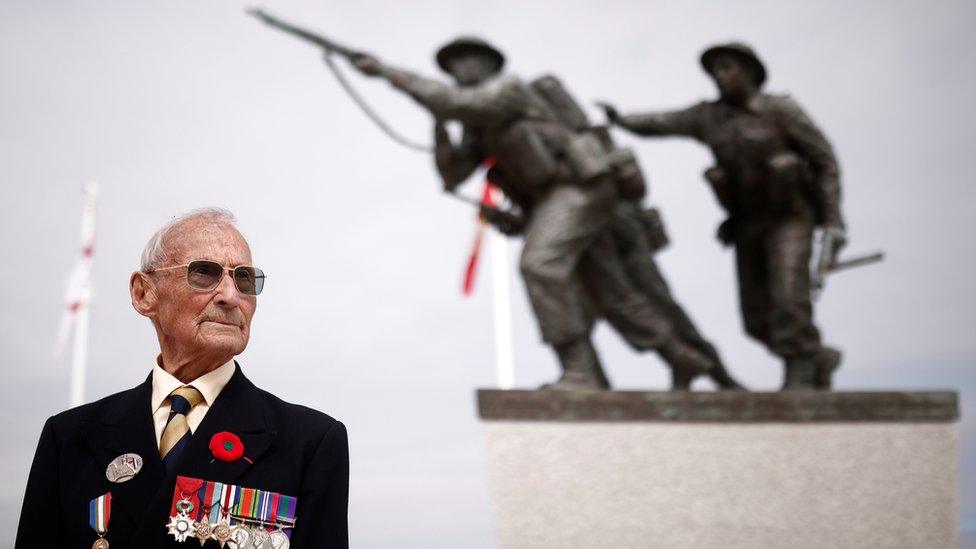The secret D-Day scientists and engineers
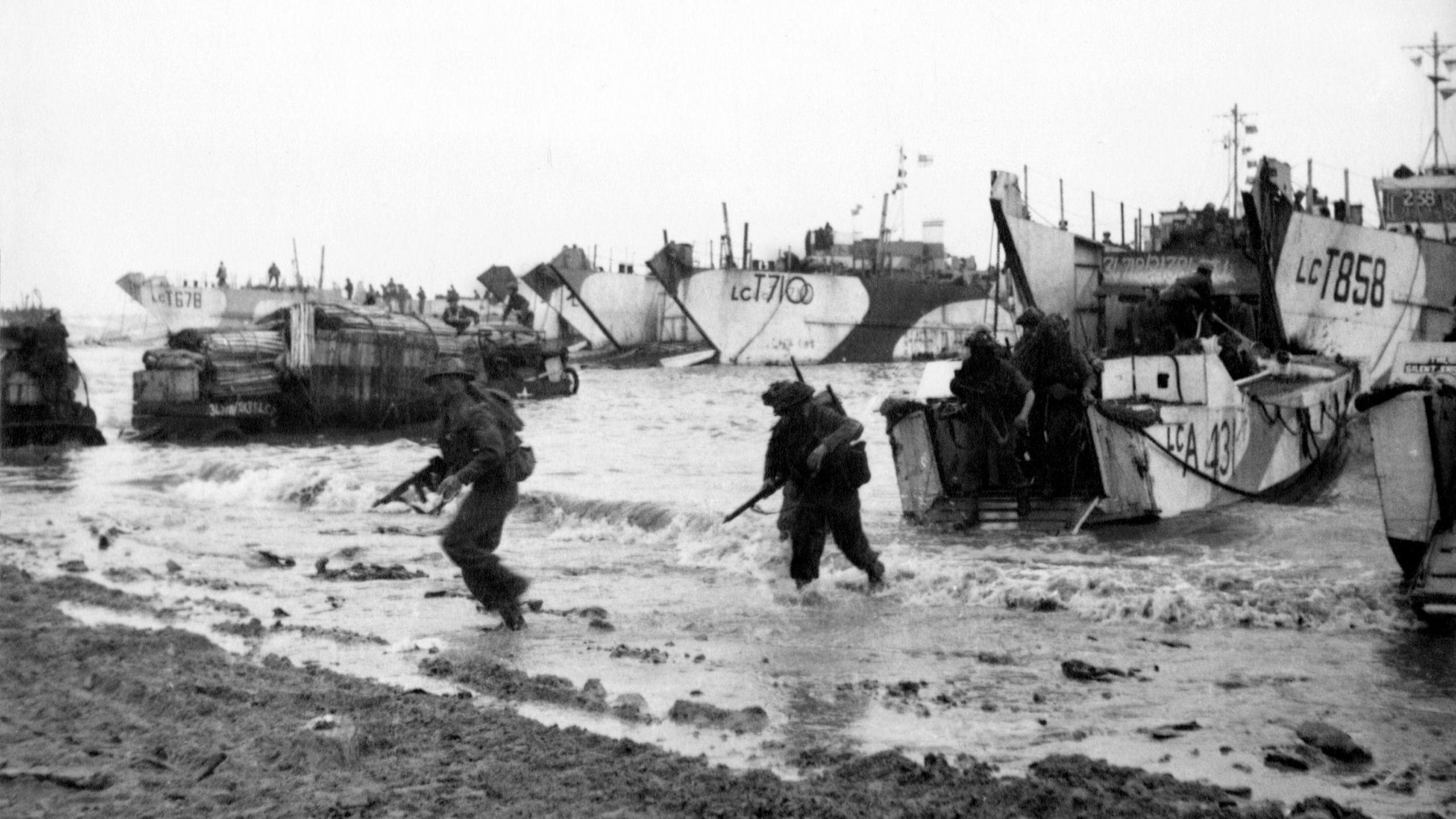
It is 80 years on 6 June since Operation Overlord was launched by allied forces to recapture Europe
- Published
Jack Darbyshire and Hugh Iorys Hughes are hardly household names.
But arguably D-Day might never have happened without them.
They are just two members of a hidden army - a secret army - who worked for years behind the scenes on plans that came to fruition on 6 June, 1944.
Their weapons were not guns and bullets, however, but science and engineering.
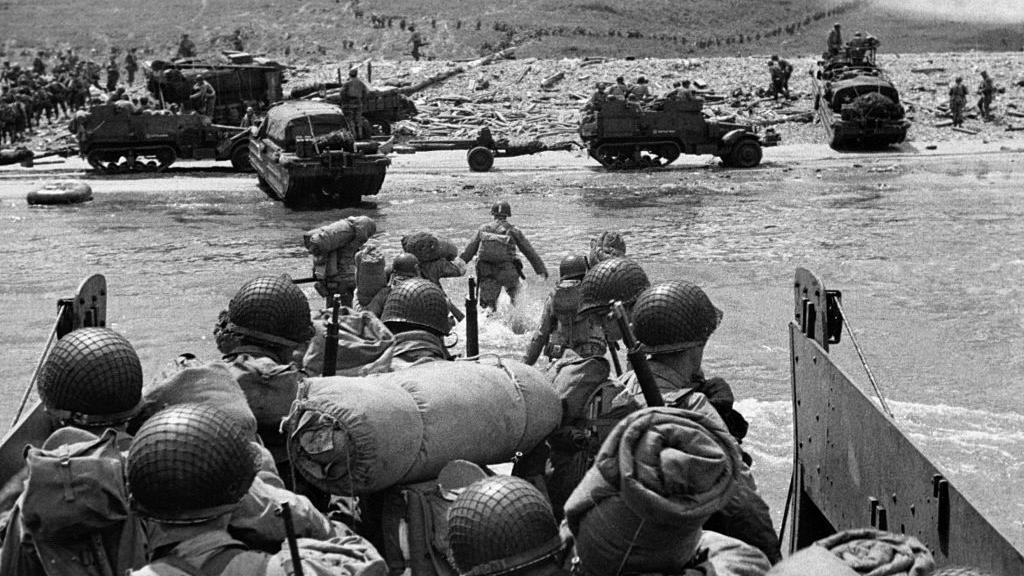
D-Day was always going to be a sea invasion and military planners needed to know what the wave conditions would be like
They also had another thing in common: they were both from north Wales.
Jack Darbyshire grew up in the quarrying town of Blaenau Ffestiniog, watching a community awash with poverty as the slate industry slowly collapsed after World War One.
But he was a bright lad, outstanding in mathematics.
It won him a place at what is today Bangor University to study physics, earning himself a first class degree in 1940, a year after World War Two broke out.
"After he got his physics degree he went on to London to the Admiralty Research Laboratory in Teddington," explained Prof Tom Rippeth, from Bangor University's School of Ocean Sciences.
"He was put into a small but very select group of mathematicians and physicists who were told they had to work out how to predict waves."
'I had the best view ever of the landings in Normandy'
- Published31 May 2024
John McOwan: ‘We hoodwinked Hitler’
- Published23 May 2024
It was a key project for Britain and the allied forces, because they knew at some point they would have to launch a sea invasion to recapture Europe from the Nazis.
Being able to predict sea conditions - especially the type of waves hitting beaches - would be critical.
"If you have a landing craft, it's much shorter than the length of the big swell waves that come off the Atlantic Ocean, so there was a risk that if it dived down in a swell wave it wouldn't come back up," explained the physical oceanography professor.
"Understanding whether there were going to be swell waves or just small choppy water was really important, so they could do the landing at the right time."
It was here that Darbyshire excelled within what was known as the top secret Group W in Teddington.
He came up with a way to model wave patterns using iron buoys in the sea, and measuring their magnetic movements.
His team even developed a computer, the first of its kind for rapid analysis of wave types.
They discovered they were able to predict wave patterns linked to weather events, even storms happening hundreds of miles away.
Armed with that information and weather forecasts, the allied forces were able to pick their day. Or in the case of D-Day - as actually happened - delay it by 24 hours because of the predictions.
"It was absolute genius what they did," said Prof Rippeth.
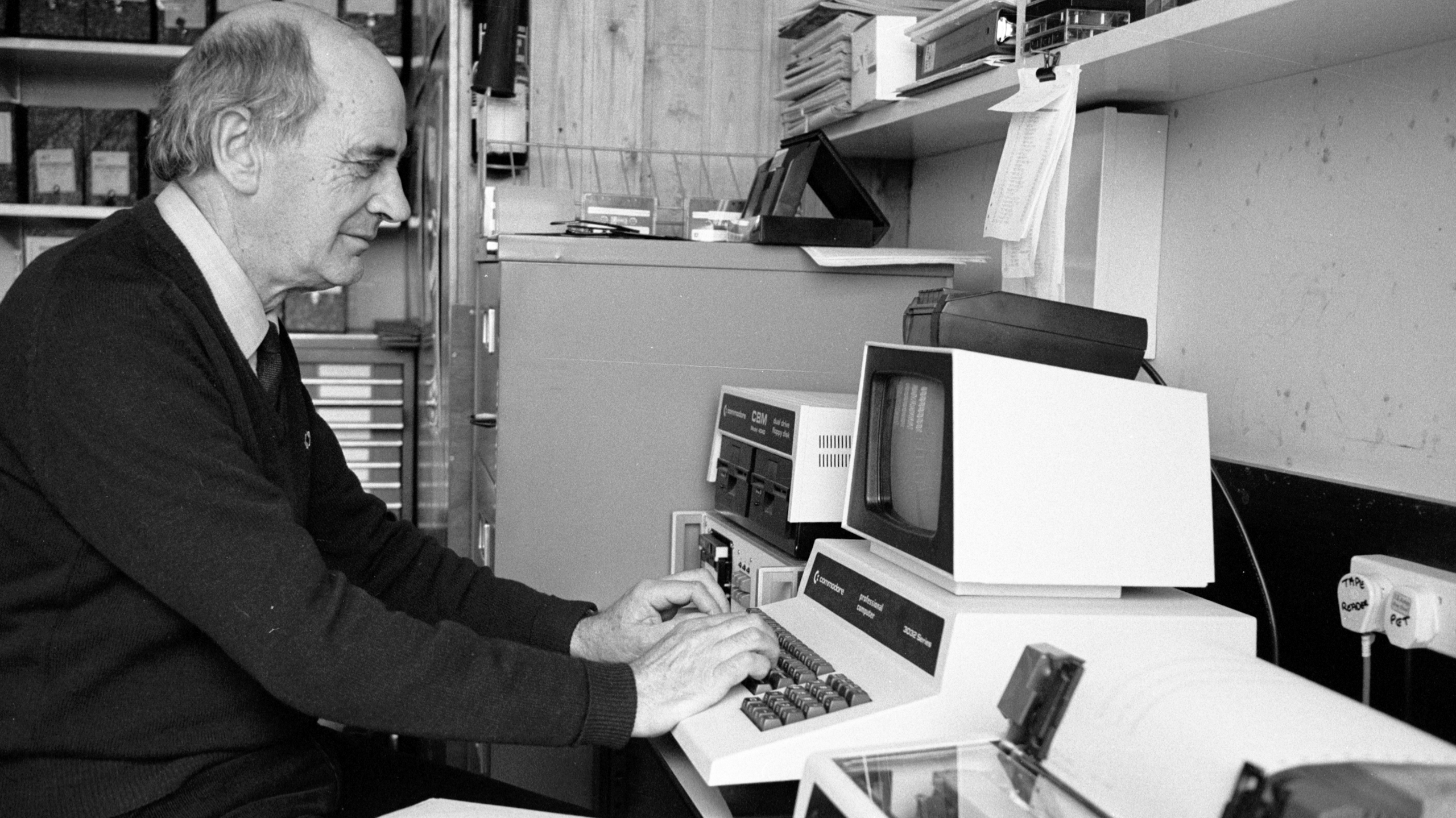
Jack Darbyshire's work on waves is still used today. He went on to establish the physical oceanography department at Bangor University.
But getting the right call on when to go is only part of the problem: how do you sustain the invasion once you land?
Wartime Prime Minister Winston Churchill had an idea - mobile harbours that could be floated out to the French beaches and sunk into the sand.
Those safe harbours could then ensure the flow of vital supplies and reinforcements to the invasion effort.
Churchill also had a man in mind to help bring the plan alive - Hugh Iorys Hughes.
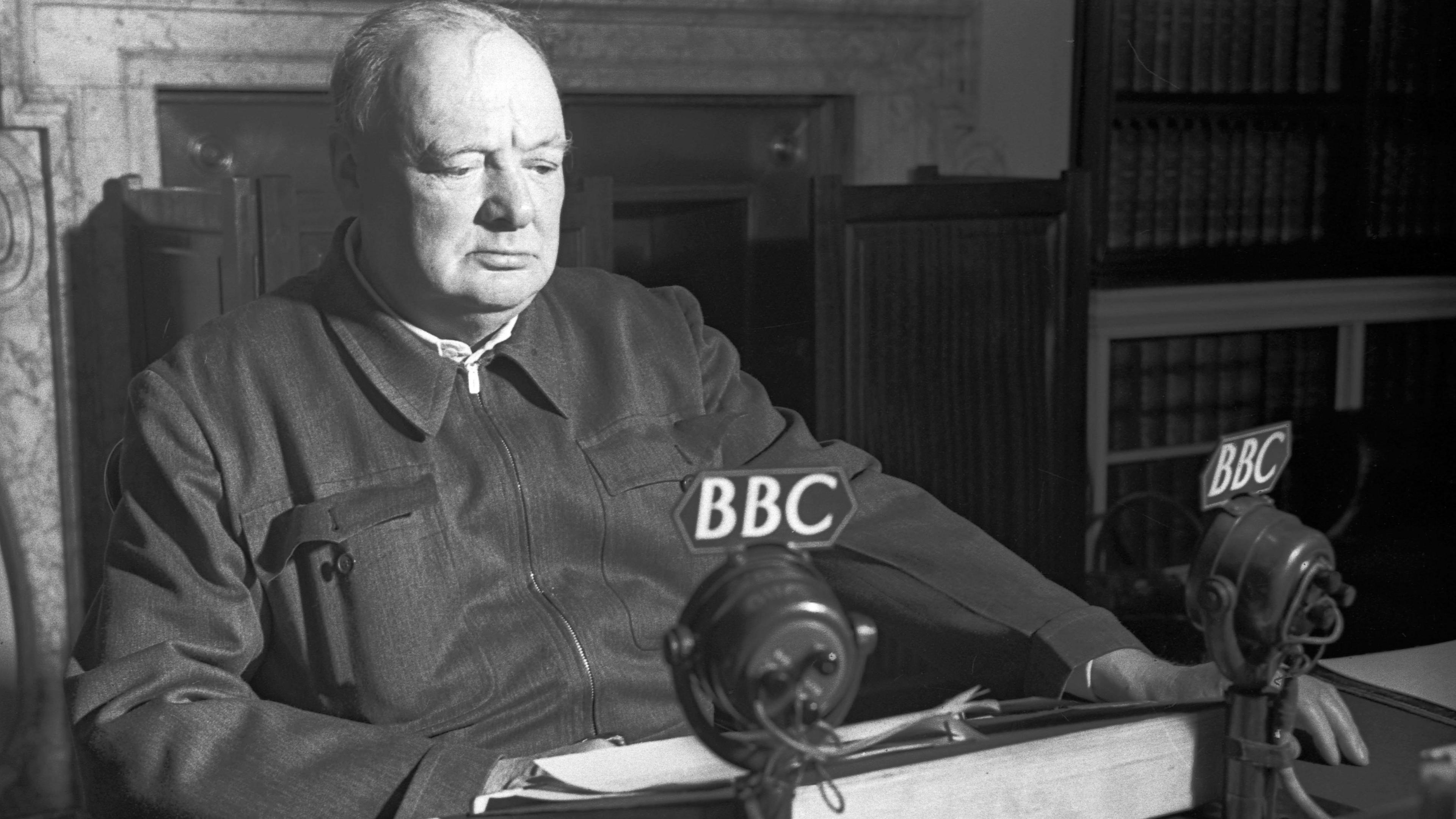
Winston Churchill asked for Hugh Iorys Hughes to spearhead the Mulberry Harbour project
Born in Bangor, Hughes was an enthusiastic yachtsman and more importantly, a successful engineer.
He submitted his plans for an idea of floating piers that could become harbours to the War Office, and was personally selected by Churchill for the project, soon to become known as the Mulberry Harbours.
Hughes chose Conwy and the Morfa estuary as the testing ground for his initial harbour plan.
But this was no one man affair.
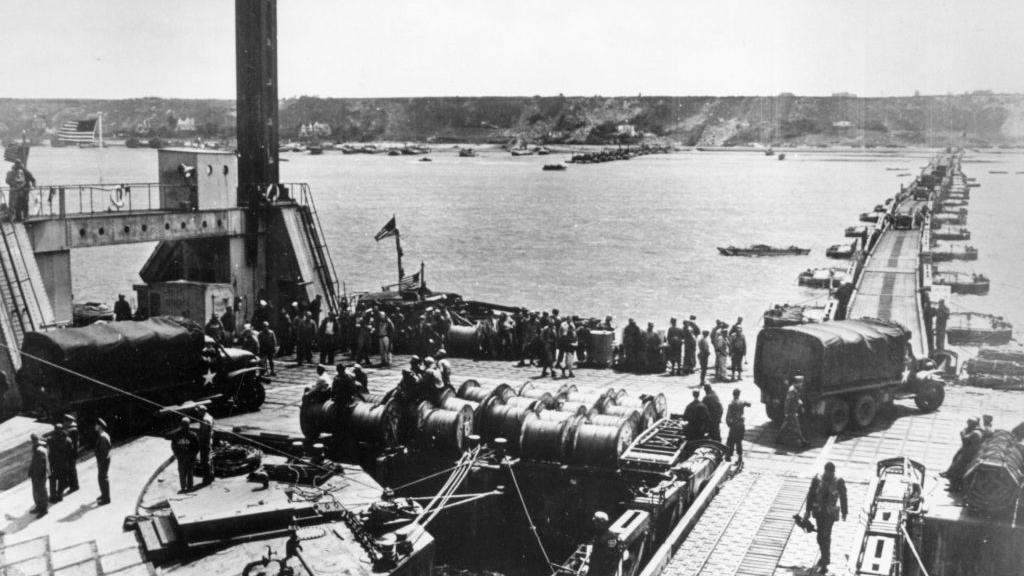
The Mulberry Harbours stretched for miles, allowing troops and supplies to support the allied invasion
"It's really interesting that he returned to his home area where he was born and bred, and we see what is a massive experiment at Conwy Morfa," said Dr Mari Wiliam, a lecturer in modern history at Bangor University.
"Over 1,000 people were working there as he was trying to develop some sort of prototype of what would become the Mulberry Harbour."
Not all Hughes ideas worked, and in fact, when the project moved to Scotland to test other Mulberry models, they outshone some of his plans.
However, he remained a key figure within the Mulberry team throughout, until the two harbours built in the project were put into action in Normandy - one on Omaha Beach and the other on Gold Beach.
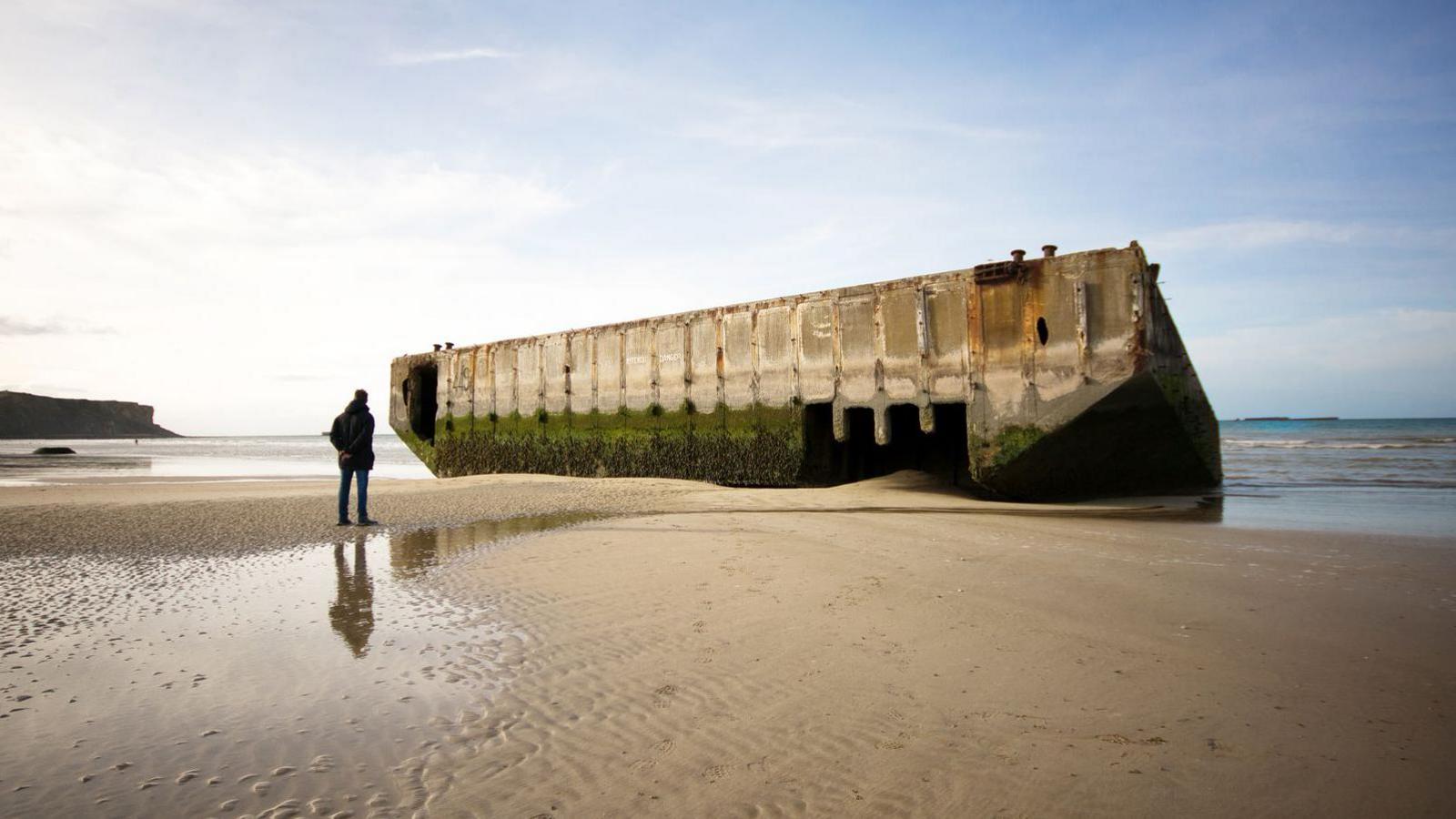
The remains of the Mulberry Harbour at Gold beach can still be seen today at Arromanches
There the harbour at Arromanches' Gold beach was able to take thousands of tonnes of supplies, vehicles and men every day - and remains of the massive Mulberry structures remain there today - testament to the brilliance of Hughes and his team of engineers.
"In many ways the landscape of Wales was really pivotal to the war effort, and perhaps it's not marked enough, it's not remembered enough, and Hugh Iorys Hughes' work in Conwy is certainly I think neglected in a lot of ways."
Related topics
- Published20 May 2024
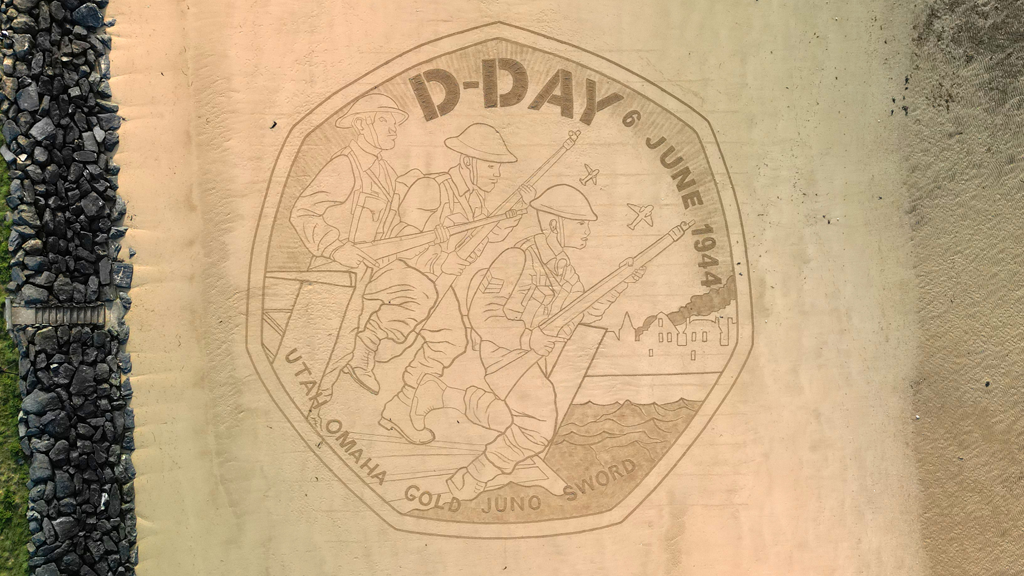
- Published13 November 2022
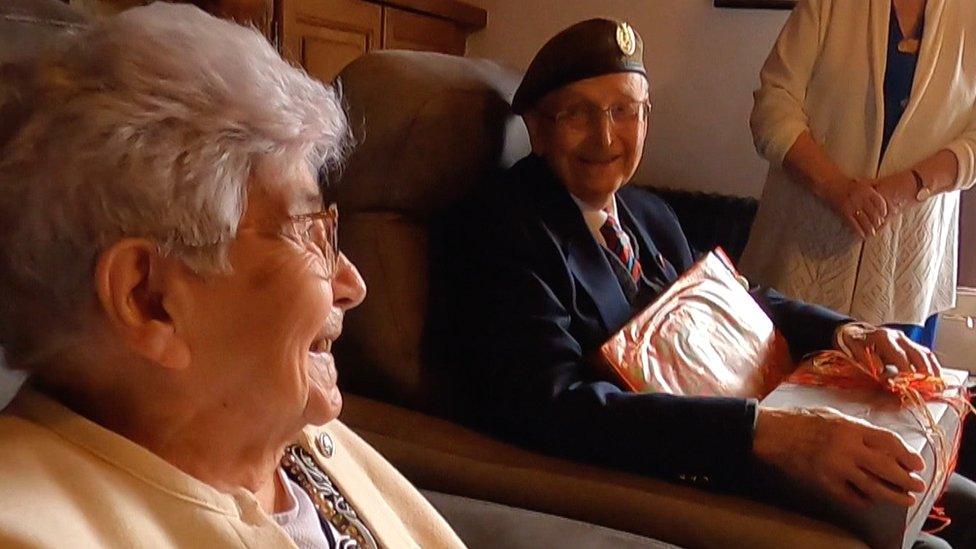
- Published6 June 2021
